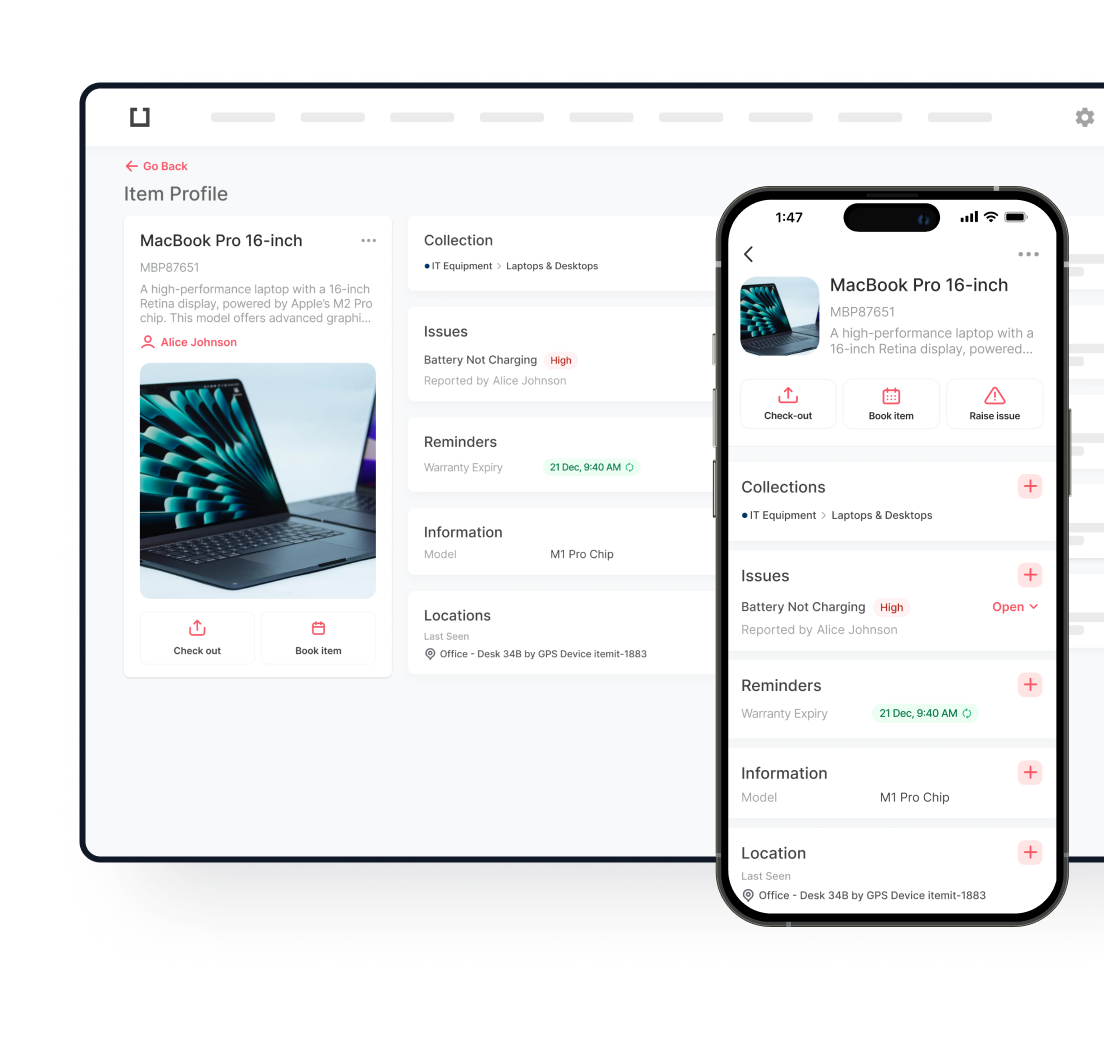
Physical assets form the backbone of countless industries—from offshore platforms to manufacturing equipment. When these assets fail unexpectedly, the consequences ripple through operations: production halts, costs surge, and safety risks multiply. That’s where asset integrity management steps in.
Think of your assets like a high-performance vehicle. You wouldn’t wait until your brakes fail before looking at warning signals. Strategic integrity management similarly protects equipment, people, and profits simultaneously while catching possible problems before they turn into catastrophic failures.
What is Asset Integrity Management?
Asset integrity management goes beyond routine maintenance. Fundamentally, it’s a methodical process making sure physical assets run as expected over the course of their existence. A strong asset integrity management system expects any problems and handles them early on, therefore avoiding only the rectification of failures.
When equipment runs as intended, workplaces get safer and efficiency gains follow. This produces a virtuous cycle in which protection and production support one another.
From design to decommissioning, beneficial integrity management affects every stage of an asset’s life cycle. This lifetime strategy shifts perspective from temporary solutions to long-term performance. Organisations begin to see asset integrity management services as strategic investments that extend equipment life and maximise capital returns.
Benefits of Effective Asset Integrity Management
Risk Reduction
Industrial operations harbor inherent dangers. Equipment under pressure, hazardous materials, and complex mechanical systems all present risks requiring management. Comprehensive asset integrity management identifies and addresses potential failure modes before they materialise.
Regular asset integrity inspection programs create multiple layers of protection against catastrophic events. Early detection of corrosion, fatigue, or degradation allows for planned interventions rather than emergency responses, ultimately saving both equipment and lives.
Enhanced Performance
When integrity programs function properly, operations run smoothly with minimal unexpected downtime. Equipment consistently delivers specified outputs while maintenance occurs on schedule rather than disrupting production.
Organisations deploying advanced asset integrity monitor technologies typically see measurable improvements across key performance indicators. Production capacity increases, energy consumption decreases, and product quality becomes more consistent—all translating directly to financial performance.
Regulatory Compliance
Well-designed asset integrity management systems naturally produce the documentation required by regulators. This integrated approach transforms compliance from a resource-draining exercise into a natural byproduct of good asset management.
Environmental protection stands out among these benefits. When assets operate within design parameters, emissions remain controlled and containment systems maintain their integrity, protecting natural resources and organisational reputation.
Key Elements of Successful Asset Integrity Management
Successful integrity programs require leadership commitment. Senior management prioritises asset integrity as a core business value, manifesting this commitment through adequate resources, clear accountability, and consistent messaging.
The technical backbone includes risk assessment methodologies, inspection protocols, and performance standards. Asset Verification plays a crucial role, confirming physical assets match their documented specifications, establishing the baseline for future assessments.
Well-trained personnel execute defined processes from the human component. Competency development ensures team members understand both technical requirements and their role in maintaining integrity.
Effective programs also implement improvement mechanisms incorporating lessons learned, technological advances, and evolving standards, ensuring relevance throughout the asset lifecycle.
Risk-Based Inspection (RBI)

Unlike calendar-based inspection schedules, which treat all equipment equally, Risk-Based Inspection directs resources toward assets with the highest risk profiles. This targeted approach maximises risk reduction while optimising costs.
The process begins with comprehensive assessments considering both failure likelihood and potential consequences. Equipment in severe conditions, handling hazardous materials, or with known vulnerabilities naturally receives more attention than non-critical assets in benign environments.
Organisations implementing RBI methodologies typically report inspection cost reductions of 20-30% while simultaneously improving risk management effectiveness. Safety performance improves as attention focuses on genuine threats rather than spreading thinly across all assets.
Preventative vs. Predictive Maintenance
Preventative maintenance follows fixed schedules regardless of asset condition—like changing a car’s oil every 5,000 miles. This approach works well for equipment with predictable wear patterns. Predictive maintenance monitors actual asset condition and intervenes only when indicators suggest developing problems.
Most organisations benefit from balancing both approaches. Critical safety systems often warrant preventative maintenance, while less critical equipment may benefit from condition-based approaches that maximise component life.
Inspection and Monitoring Strategies
Comprehensive asset integrity inspection combines multiple examination techniques to detect various degradation mechanisms. Visual inspections catch obvious issues, while advanced non-destructive testing reveals hidden problems like internal erosion or crack development.
Continuous monitoring transforms integrity management from periodic snapshots to real-time awareness. Modern asset integrity monitor systems track critical parameters without human intervention, enabling truly proactive responses.
The true power emerges when organisations integrate findings from multiple sources—routine inspections, specialised examinations, continuous monitoring, and operational observations—creating a complete picture of asset condition and performance trends.
Developing an Asset Integrity Management System (AIMS)
Building an effective system begins with understanding current practices and desired outcomes. A thorough gap analysis compares existing approaches against industry standards, identifying improvement opportunities.
Core components include clear performance standards, documented risk assessment methodologies, comprehensive inspection protocols, management of change processes, competency development programs, and performance metrics.
Configuration Management ensures documentation accurately reflects physical assets and operating parameters. Without this alignment, integrity assessments may evaluate theoretical conditions rather than actual status.
Effective implementation integrates with existing operational frameworks rather than creating parallel systems. This approach leverages established processes while introducing new elements to address gaps, typically following a phased implementation beginning with high-priority assets.
Essential Tools and Technologies
Modern integrity programs leverage interconnected digital ecosystems to collect, analyse, and visualise data from multiple sources. Computerised Maintenance Management Systems serve as central repositories for asset information, tracking inspection findings and generating alerts when parameters approach critical thresholds.
Effective Asset Identification forms the technological cornerstone of these systems. By implementing standardised tagging, barcoding, or RFID solutions, organisations create a digital fingerprint for each asset that connects physical equipment to its complete historical record. This identification framework eliminates confusion, reduces documentation errors, and enables precise tracking throughout the asset lifecycle.
Condition-monitoring sensors continuously evaluate asset health without human intervention. These devices detect vibration anomalies, thermal changes, ultrasonic emissions, corrosion rates, and process deviations that could signal developing problems.
Field personnel now carry powerful tools in their pockets. Mobile technology enables standardised inspection processes while capturing rich data including photographs and measurements, allowing real-time transmission of findings for immediate analysis.
Compliance and Regulatory Considerations
Although they differ in many fields, regulatory systems’ main objective is averting catastrophic collapses. Knowledge of these needs is the basis for effective compliance programs.
Beyond immediate financial penalties, non-compliance implications include possible legal liability, insurance issues, operational limitations, and reputation damage.
Leading organisations implement regulatory intelligence processes to monitor evolving requirements across jurisdictions. Documentation systems preserve evidence of compliance activities, creating audit trails that demonstrate due diligence during inspections or investigations.
Common Challenges and How to Overcome Them
Financial Constraints
Integrity programs often compete with immediate revenue-generating projects for limited resources. This competition intensifies during economic downturns when organisations face pressure to cut costs while maintaining production.
Solution: Develop risk-based business cases that quantify potential losses from integrity failures against investment costs. These analyses typically demonstrate that proactive integrity spending costs significantly less than reactive failure response. Phased implementation approaches can distribute costs over multiple budget cycles while addressing highest-risk assets first. Exploring shared service models can also reduce costs by leveraging specialised expertise across multiple facilities.
Technology Adoption Hurdles
Many organisations struggle to integrate advanced integrity technologies into established workflows. Resistance may come from unfamiliarity, concerns about reliability, or perceived complexity. Without effective implementation, even the most sophisticated technologies fail to deliver expected benefits.
Solution: Start with pilot deployments that demonstrate value before full-scale implementation. Develop clear integration protocols that connect new technologies with existing systems. Establish data governance policies that define how integrity information will be managed throughout its lifecycle. Perhaps most importantly, involve end-users in technology selection and implementation planning to build ownership and address practical concerns.
Competency Gaps
Workforce capacity has to match changing technology and approaches. Particularly in remote operations or during generational workforce transfers, many companies struggle to acquire and preserve the specialised knowledge needed for successful integrity management.
Solution: Implement structured competency development programs aligned with specific role requirements. Combine formal training with mentoring and practical experience to build both technical knowledge and decision-making capabilities. Develop knowledge management systems that capture institutional expertise from experienced personnel. Consider cross-training to build versatility and ensure coverage during personnel changes.
Fragmented Approaches
Many businesses have several divisions that handle various aspects of asset integrity without efficient collaboration. This fragmentation generates gaps, duplicates, and competing priorities that compromise general efficiency.
Solution: Establish cross-functional governance structures that coordinate integrity activities across departmental boundaries. Develop integrated planning processes that align inspection, maintenance, and operational activities. Create common performance metrics that encourage collaborative rather than siloed approaches. Regularly review program effectiveness from an enterprise perspective rather than evaluating individual components in isolation.

Long-term Advantages of Effective Asset Integrity Management
Organisations maintaining disciplined approaches experience dramatic reliability improvements over time. Equipment failures become increasingly rare as degradation mechanisms receive early detection and resolution. Many report availability improvements of 5-10% after several years, representing substantial production increases without capital investment.
The economic benefits extend beyond avoiding failure costs. Maintenance expenses typically decrease by 15-25% as organisations shift from reactive to planned interventions. Capital expenditures become more efficient as asset life extension reduces replacement frequency.
Perhaps most importantly, mature integrity programs create organisational resilience—the capacity to withstand unexpected challenges while maintaining operational continuity. This resilience becomes increasingly valuable in volatile business environments where adaptability determines long-term success.
Securing Your Future: The Strategic Edge of Asset Integrity
Asset integrity management transcends its technical origins to become a strategic imperative. Organisations mastering this discipline gain multiple advantages: safer operations, improved reliability, reduced environmental impact, and stronger financial performance.
The approaches outlined provide practical strategies for protecting valuable assets while optimising their contribution to organisational success. From risk-based methodologies to advanced monitoring technologies, effective integrity management combines proven techniques with emerging capabilities.
Ready to elevate your approach to asset protection? itemit’s comprehensive asset integrity management services combine industry expertise with cutting-edge technology to create customised integrity programs aligned with your specific operational needs. Contact us today to discover how itemit can transform your approach to asset integrity, creating sustainable value through enhanced reliability, safety, and compliance.

Try itemit
Choose a better way to track
your assets.
Start your free 14-day trial now!

Keep Learning
itemit Blog
Tips, guides, industry best practices, and news.
What Is Active RFID? A Complete Guide to Smart RFID Tags
Discover what Active RFID is, how active tags function, and the key benefits and use cases that make this technology essential for modern tracking systems.
Everything You Need to Know About 2D Barcodes
Discover everything about 2D barcodes, including how they work, their benefits, and how they are revolutionizing industries and improving business operations
Complete Guide to Asset Lifecycle Management and Its Benefits
Learn about asset lifecycle management and how it helps businesses optimize asset usage, reduce costs, and improve efficiency throughout the asset’s life.



